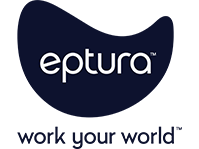
Most companies nowadays use the cloud to store their sensitive data and make it accessible anytime and from anywhere over the internet.
In recent years, there have been numerous cloud computing attacks:
- account or service hijacking,
- denial of service,
- data loss, and
- data breaches
Millions of people like you and me have had their personal data stolen, leaving companies with the hard task of covering substantial financial losses and of proving once again to the whole world that they can guarantee their users’ security.
What is the CSA CAIQ?
Simply put, the Consensus Assessments Initiative Questionnaire (CAIQ) is a set of “yes or no” questions a cloud consumer and cloud auditor can ask of a cloud provider in order to determine the effectiveness of their security controls.
Designed by the Cloud Security Alliance (CSA) as part of its Governance, Risk Management, and Compliance (GRC) Stack, the CAIQ follows the organization’s mission of defining best practices and standards that create a more secure cloud computing environment for both providers and users.
Shared responsibility model of cloud computing
According to the CSA Guidance, cloud computing involves a shared responsibility model in which:
- Cloud providers should clearly document their internal security controls and customer security features so the cloud user can make an informed decision. Providers should also properly design and implement those controls.
- Cloud users should, for any given cloud project, build a responsibilities matrix to document who is implementing which controls and how. This should also align with any necessary compliance standards.
The Cloud Security Alliance provides two essential tools to help meet these two requirements:
- the CAIQ, and
- the Cloud Controls Matrix (CCM), which documents what security controls exist in IaaS, PaaS, and SaaS offerings while providing security control transparency around them.
Both documents are especially useful for ensuring compliance requirements are met.
What does the CAIQ assess?
As previously mentioned, the CAIQ analyzes the security controls a cloud provider has at that moment and determines if they match industry standards.
The security controls assessment covers 16 domains:
- Application & Interface Security: assessing the security of application software that is running on or being developed in the cloud
- Audit Assurance and Compliance: ensuring the audit function is efficient and applied to cloud system
- Business Continuity: reviewing the ability to continue operations in the event of an outage
- Change Control & Configuration: ensuring any changes in the cloud follow the same process as internal system
- Data Security and Information Lifecycle: assessing the means of identifying important data and the controls established to secure it in accordance with corporate policy
- Data Center Security: ensuring the effective implementation of physical control
- Encryption and Key Management: analyzing data encryption implementation and ensuring scalable key management
- Governance and Risk Management: assessing the ability to govern and measure enterprise risk introduced by cloud computing
- Human Resources: analyzing factors such as background screening, employee agreements, employee roles/ responsibilities, workforce training, and awareness which can impact cloud data security
- Identity and Access Management: managing identities and leveraging directory services to provide access control
- Infrastructure and Virtualization Security: assessing core cloud infrastructure security, including networking, workload security, and hybrid cloud considerations
- Interoperability and Portability: reviewing the ability of cloud systems to interact and work with each other, which also impacts the ability of a user to move and their applications and data between their cloud systems
- Mobile Security: ensuring secure cloud computing on mobile devices
- Incident Management, E-Discovery, and Cloud Forensics: assessing incident detection, response, notification, and remediation procedures
- Supply Chain Management: reviewing security controls that mitigate and contain data security risks across the cloud supply chain
- Threat and Vulnerability Management: assessing threat and vulnerability mitigation and protection




